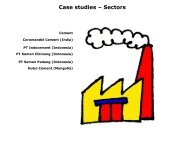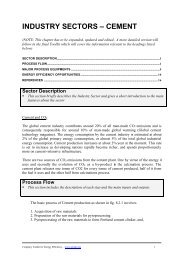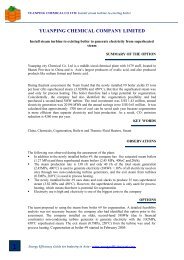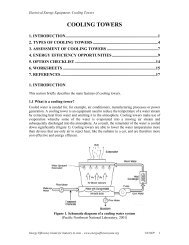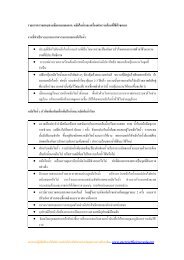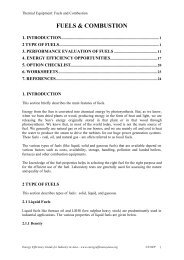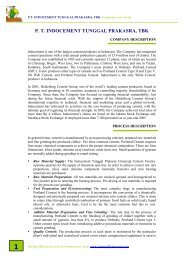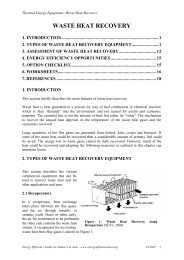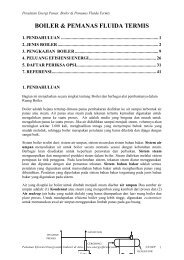English - Energy Efficiency Guide for Industry in Asia!
English - Energy Efficiency Guide for Industry in Asia!
English - Energy Efficiency Guide for Industry in Asia!
- No tags were found...
Create successful ePaper yourself
Turn your PDF publications into a flip-book with our unique Google optimized e-Paper software.
In<strong>for</strong>mation on the CD-ROM and website:• Company examples (see Appendix A)• Worksheets (Worksheet 15, see Appendix B)• Fishbone Diagram3b. Identify possible optionsOnce we know why losses occur, we can move to the next question: What can we do to solve it?Part 2How to Become <strong>Energy</strong>EfficientA bra<strong>in</strong>storm session with the Team and other staff from the focus areas is the best way to come up withpossible options. Options can fall <strong>in</strong> the follow<strong>in</strong>g categories:• Good housekeep<strong>in</strong>g• Improved process management• Production process / equipment modification• New technology / equipment• Input material substitution• On-site reuse / recovery• Production of useful by-product• Product modificationClick on “Option categories” on the website <strong>for</strong> an explanation and examples <strong>for</strong> each category. You canalso use Worksheet 15 to write down possible options.There is no such th<strong>in</strong>g as a “bad idea” so everyone should be encouraged to come up with as manypossible options as possible! Sometimes hundreds of possible options are generated <strong>for</strong> one focus areaalone.Another source of possible options are the notes from the walkthrough of focus areas under task 2c(Worksheet 14) and the notes from the discussion with top management about energy management <strong>in</strong>the company under task 1a (Worksheet 2).In<strong>for</strong>mation on the CD-ROM and website:• Company examples (see Appendix A) <strong>for</strong> examples from companies that participated <strong>in</strong> theGERIAP project on how they identified possible options• Worksheets (Worksheet 15, see Appendix B)• Option categories3c. Screen options <strong>for</strong> feasibility analysisThe Team now needs to decide which possible options to <strong>in</strong>vestigate <strong>for</strong> feasibility. The easiest way todo the screen<strong>in</strong>g of options is by putt<strong>in</strong>g them <strong>in</strong> one of these categories:• Options that can be implemented directly. They are technically simple and need little or no moneyto implement. For example, repair<strong>in</strong>g leaks, chang<strong>in</strong>g an operat<strong>in</strong>g procedure, reduc<strong>in</strong>g excess airfrom the boiler• Options that require further analysis. These options are technically more complex or require af<strong>in</strong>ancial <strong>in</strong>vestment. For example, replac<strong>in</strong>g a compressor, recover<strong>in</strong>g heat from boiler blowdown,or replac<strong>in</strong>g lime with alternative materials <strong>in</strong> cement production• Options that can be considered at a later stage. These options are probably difficult to <strong>in</strong>vestigateand implement, <strong>for</strong> example, because the costs are too high, they take too much time to <strong>in</strong>vestigate,or a plant upgrade is planned that will cover this option already28<strong>Energy</strong> <strong>Efficiency</strong> <strong>Guide</strong> <strong>for</strong> <strong>Industry</strong> <strong>in</strong> <strong>Asia</strong>



